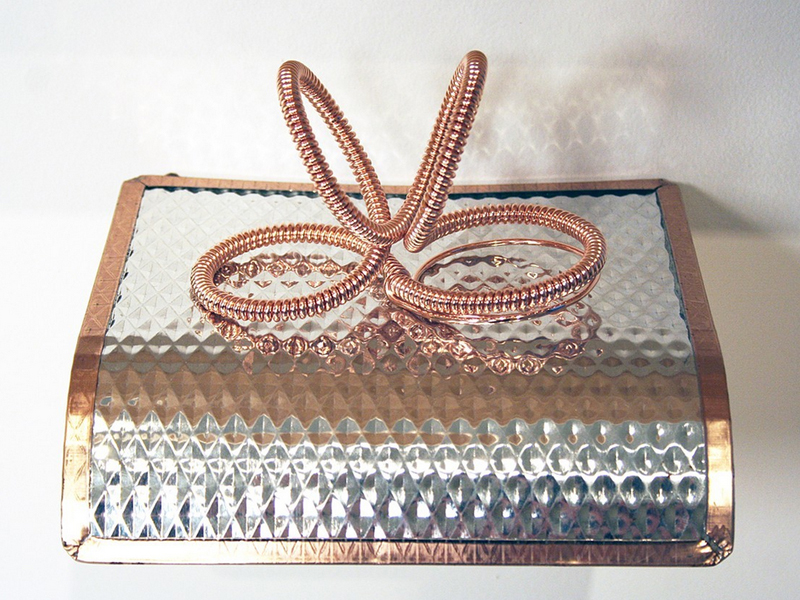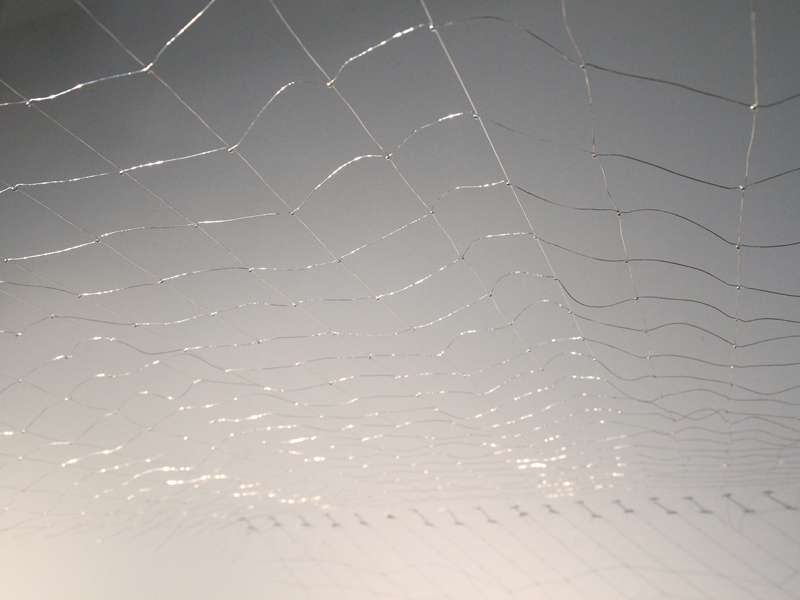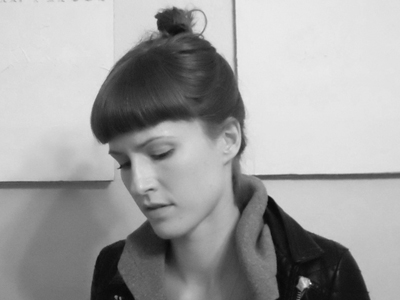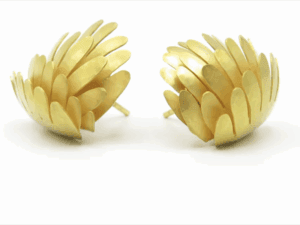
Julia Heineccius’s recent exhibition, Divisible, installed at SOIL Gallery in Seattle, Washington, late last year was a significant stride in her practice. Heineccius’s prior object-based work is strongly embedded in the interaction of form and surface. The transition from plane to volume, and the materiality of texture, color, and reflection, are so significant to her pieces that one tends to wrap oneself around the tactility of surface before even noticing there is something vaguely “tip-of-the-tongue” familiar about her forms. A brooch from 2012, Coil 2, for example, is formed from thick copper wire, subsequently rose gold-plated to create a wholly new and lustrously crafted object. Yet the piece so much resembles a segment of flexible metal conduit that one unconsciously absorbs the internal conversations of the commonplace within it: construction, utility, materials of function. As in much of Heineccius’s past work, this object is built from a post-industrial language later skinned with notions of the decorative.

Her most recent show, Divisible, replaces the conversations of adornment, the decorative, and “objecthood” with investigations into perception, subtlety, and the body. A net of fine silver wire is suspended from the gallery walls, hovering just overhead and slightly above the natural line of sight. The surface of the wire netting is so slightly delineated that your first recognition of it is its shadow, then a mere glinting from the polished surfaces as you move beneath the lights. Your body displaces the air in the gallery and the net trembles.

The installation divorces itself from conversations of the handheld object, and commands attention to that which we often ignore: glossed-over spaces that lie just beyond our line of sight, the scale of our body under a looming shroud, the vibration of the air as we force our bodies through space. The lightness of the connection between our physical form and the gallery space becomes poetic; the further we progress into the space, the more we unknowingly begin to participate in the work itself.
Like Heineccius, many current emerging makers are approaching the body in an interdisciplinary context, utilizing the methodologies of jewelry in formats that expand far past the boundaries of traditional practice. What, then, is the value of installation-based works like Divisible for contemporary jewelry? Taking the knowledge of body, form, materiality, and wearability inherent in jewelry, works like Divisible allow us to develop deeper dialogues within our field. These installation-based works demand physical action from the body itself: to navigate and perceive that which is rooted in the brief experience of space. They foster our ability to understand movement and vision in ways that wearable work could not; they do not address their “objecthood” through the ability to be placed on the body or integrated into the daily activities of an individual, but rather through a fleeting encounter with a modified space. Bodies are more than forms to place works onto or suspend works off of, they are objects of motion, experience, perception. “The body is our general medium for having a world,”[1]and our worlds are comprised of more than the adornment, decoration, and objects that revolve around us. Installation-based works such as Divisible allow us to develop our bodily knowledge of the countless unexpected subtleties that having (and being) a body constitutes.
INDEX IMAGE: Julia Heineccius, Divisible (or dear A, dear M, dear E, dear S, dear I, dear P, … ) (detail of constituent parts), 2014, installation, silver, 457 x 152 cm, photo: artist
[1] Maurice Merleau-Ponty, Phenomenology of Perception, (London: Routledge, 2005)




